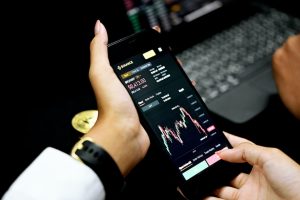The foreign exchange market (forex) is a vast and complex market where currencies are traded on a global scale. The market is characterized by a high level of volatility, which makes it a challenging environment for traders. To succeed in trading forex, it is essential to have a good understanding of the market dynamics and the tools that can be used to analyze it. In this article, we will discuss how to analyze the forex market.
What is Forex Market Analysis?
Forex market analysis is the process of evaluating the market conditions to determine the likely direction of the currency prices. The analysis is done using various tools and techniques, including technical analysis, fundamental analysis, and sentiment analysis. These methods help traders gain insights into the market dynamics, leading to better trading decisions.
Types of Forex Market Analysis
There are three primary types of forex market analysis: Technical analysis, Fundamental analysis, and Sentiment analysis. Each of these methods has its strengths and weaknesses, and traders should use a combination of these methods to get a comprehensive understanding of the market.
Technical Analysis
Technical analysis is the most widely used method of forex market analysis. It involves analyzing the past price movements of currencies to identify patterns, trends, and support and resistance levels. Technical analysts use charts and indicators to identify these patterns and make trading decisions based on them.
The most common technical indicators used in forex trading include Moving Averages, Relative Strength Index (RSI), Stochastic Oscillator, and Bollinger Bands. These indicators help traders identify potential trading opportunities and determine entry and exit points.
Fundamental Analysis
Fundamental analysis involves analyzing the economic and political factors that affect the value of currencies. These factors include interest rates, inflation, GDP, employment rates, and political stability. Fundamental analysts use economic data and news releases to determine the strength or weakness of a currency.
For example, a country with a high GDP growth rate, low inflation, and low unemployment rates is likely to have a strong currency. On the other hand, a country with a high inflation rate, high unemployment rates, and political instability is likely to have a weak currency.
Sentiment Analysis
Sentiment analysis involves analyzing the market sentiment to determine the likely direction of currency prices. It involves analyzing the opinions and attitudes of traders, investors, and analysts towards a particular currency or market.
Sentiment analysis is done using various tools, including social media, news releases, and surveys. Traders use sentiment analysis to identify potential trading opportunities and determine market trends.
Steps to Analyze Forex Market
To analyze the forex market, traders should follow the following steps:
Step 1: Identify the market trend
The first step in analyzing the forex market is to identify the market trend. Traders can use charts and technical indicators to identify the trend. A market trend can be bullish (upward), bearish (downward), or range-bound (sideways).
Step 2: Identify potential trading opportunities
Once the market trend is identified, traders should look for potential trading opportunities. Traders can use technical indicators, economic data, and news releases to identify potential trading opportunities.
Step 3: Determine entry and exit points
After identifying potential trading opportunities, traders should determine the entry and exit points. Traders can use technical indicators and support and resistance levels to determine these points.
Step 4: Manage risk
Managing risk is essential in forex trading. Traders should use stop-loss orders to limit their losses and take-profit orders to lock in profits.
Conclusion
Analyzing the forex market is a crucial aspect of successful trading. Traders should use a combination of technical, fundamental, and sentiment analysis to gain a comprehensive understanding of the market dynamics. By following these steps, traders can identify potential trading opportunities and make informed trading decisions. However, traders should also remember that the forex market is highly volatile, and trading involves risks. Therefore, it is essential to manage risk and use proper risk management strategies.





